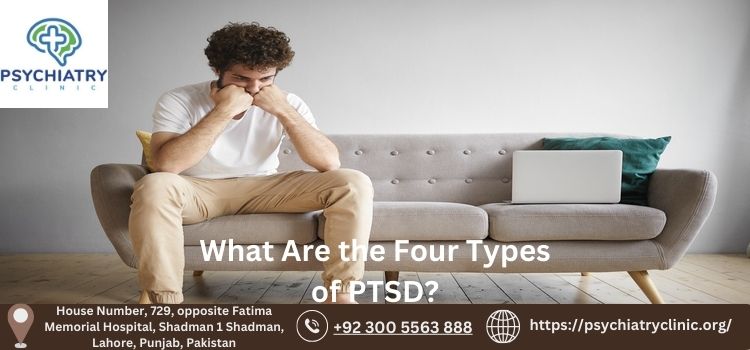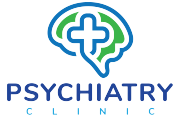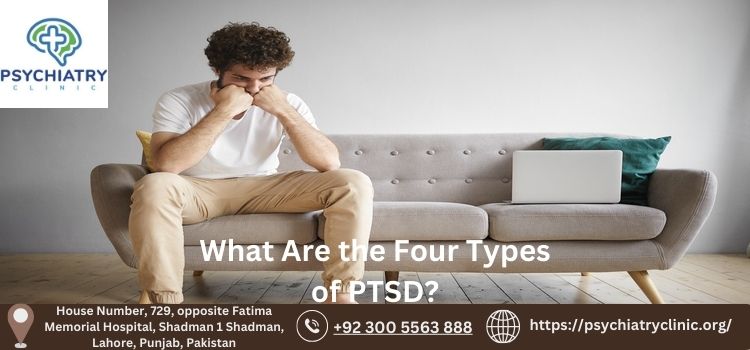What Are the Four Types of PTSD? Comprehensive Guide
PTSD is a mental health condition that affects millions of people worldwide. It is commonly associated with individuals who have experienced or witnessed a traumatic event, such as war, natural disasters, physical or sexual assault, and serious accidents. It is of different types now explore What Are the Four Types of PTSD?
To cope with PTSD it is convenient for you to know which type of ptsd you are facing .
Read more to get more information.
What Are the Four Types of PTSD?

There are four main types of PTSD, each with its own distinct symptoms and characteristics. These include:
Normal Stress Response:
This type of PTSD is also known as Acute Stress Disorder (ASD) and can occur in the first month after a traumatic event. It is characterized by symptoms such as anxiety, fear, and sleep disturbances.
Symptoms
- Difficulty sleeping or concentrating
- Feeling on edge and easily startled
- Recurring thoughts about the traumatic event
- Avoiding anything that reminds you of the trauma
- Intense feelings of fear, guilt, or anger
Causes
The normal stress response is triggered by a single traumatic event, such as an accident or natural disaster. It can also occur in individuals who have experienced sudden and unexpected loss or violence.
Treatment
Treatment for normal stress response usually involves therapy, specifically Cognitive Behavioral Therapy (CBT), to help cope with the symptoms and learn healthy coping mechanisms. In some cases, medication may also be prescribed to manage anxiety and sleep disturbances.
Uncomplicated PTSD:
Uncomplicated PTSD is the most common type of PTSD. It occurs when an individual experiences one traumatic event or a series of similar events over time.
Symptoms
- Flashbacks and nightmares about the traumatic event
- Avoidance of places, people, or activities that trigger memories of the trauma
- Negative thoughts and feelings about oneself, others, and the world
- Hypervigilance and easily triggered startle response
Causes
Uncomplicated PTSD can result from a wide range of traumatic events, such as combat, physical or sexual assault, childhood abuse or neglect, and natural disasters. It can also develop from ongoing stressors, such as living in a war zone or being in an abusive relationship.
Treatment
Treatment for uncomplicated PTSD often involves a combination of therapy and medication. Therapy may include CBT, Exposure Therapy, and Eye Movement Desensitization and Reprocessing (EMDR). Medication may be prescribed to manage symptoms such as anxiety, depression, and sleep disturbances.
Comorbid PTSD:
Comorbid PTSD, also known as complex PTSD, is when an individual experiences both PTSD and another mental health condition.
Symptoms
The symptoms of comorbid PTSD are similar to those of uncomplicated PTSD but may be more severe and long-lasting. The additional mental health conditions can also present their own set of symptoms.
Causes
Comorbid PTSD can develop when an individual already has a pre-existing mental health condition and experiences a traumatic event. It can also occur when PTSD triggers the development of another mental health condition, such as depression or substance abuse.
Treatment
Treatment for comorbid PTSD involves addressing both the PTSD symptoms and the co-occurring mental health condition. This may include a combination of therapy, medication, and lifestyle changes.
Covert PTSD:
Covert PTSD, also known as complex or hidden PTSD, is a type of PTSD that may not present with obvious symptoms.
Symptoms
- Difficulty regulating emotions
- Feeling numb or detached from others
- Trouble trusting and forming relationships
- Self-destructive behaviors
Causes
Covert PTSD can result from long-term childhood trauma, such as emotional or physical abuse, neglect, or growing up in a dysfunctional family. It can also develop from ongoing stressors and chronic low-level trauma.
Treatment
Treatment for covert PTSD involves therapy to address the underlying trauma and its impact on an individual’s emotional regulation and relationships. Identifying and changing unhealthy coping mechanisms is also important in managing this type of PTSD.
Conclusion
PTSD is a complex and individualized condition, and its types may overlap or coexist in different individuals. It is of different types now explore What Are the Four Types of PTSD? It is essential to seek professional help if you are experiencing symptoms that interfere with your daily life. With proper treatment and support, it is possible to manage PTSD and lead a fulfilling life. Remember, healing takes time, but it is achievable.
FAQs
Frequently asked questions by people are given below:
How is PTSD diagnosed?
PTSD is diagnosed through a mental health assessment that includes a thorough discussion of one’s symptoms and medical history. A trained mental health professional can diagnose PTSD based on the Diagnostic and Statistical Manual of Mental Disorders (DSM-5) criteria.
How does PTSD affect a person?
PTSD can have a significant impact on an individual’s daily life, relationships, and overall well-being. It can cause symptoms such as anxiety, depression, difficulty concentrating and sleeping, and avoidance of triggering situations or memories.
What can cause PTSD?
PTSD can be caused by a wide range of traumatic events, including combat, physical or sexual assault, childhood abuse or neglect, natural disasters, and ongoing stressors.

